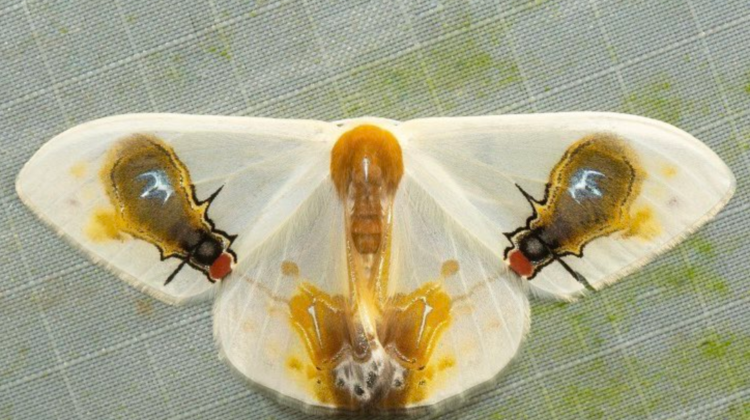
We have seen plants and insects masquerading as something else to confuse their natural predators, but the Macrocilix maia moth from Southeastern Asia takes mimicry to an entirely new level by painting an entire scene on its wings.
When observing a Macrocilix maia moth, the painted scene on its wings is impossible to ignore – two flies eating brown spots that resemble fresh bird droppings. It’s a disgusting image, and apparently, we are not the only ones who find it repulsive. Many predators of this moth tend to avoid insects that feast on bird droppings, associating them with possible illness, so the natural pattern serves as a defense mechanism for the otherwise vulnerable insect. Moreover, the moth emits a pungent odor that can be mistaken for real bird droppings, enhancing the illusion of the scene.

I understand what you’re thinking – these photos must have been manipulated. I can’t blame you since the flies seem too authentic to be real. The body contours are quite precise, particularly the head, and the brown splotches also appear genuine. Even the “flies'” bodies reflect light. How did the moths develop such a specific pattern? It’s not like they knew that this pattern would protect them from predators, right?
As often occurs, the evolution of Macrocilix maia was likely a random process. Thousands of years ago, a minor mutation caused a moth to have a pattern that somewhat resembled the distinct scene we now associate with the entire species. The pattern proved effective in deterring predators, so the genes were inherited and passed on through generations. Then, natural selection took place.
Moths with mutations that developed the flies-feasting-on-droppings pattern had a greater chance of reproducing, while those with other patterns did not. The survival of the fittest principle played a role, and the pattern likely evolved over many generations with the most convincing pattern becoming more widespread. The initial pattern was probably not as realistic as it is today but has evolved over time. This process is likely still ongoing, with minor mutations contributing to make the scene even more convincing.
We’ve seen some incredible examples of mimicry in nature, like the moth that convincingly mimics a dead tree leaf or the harmless caterpillar that mimics the head of a venomous snake. However, Macrocilix maia takes it to another level by mimicking a relatively complex scene, complete with an appropriately foul smell.

Leave a Reply